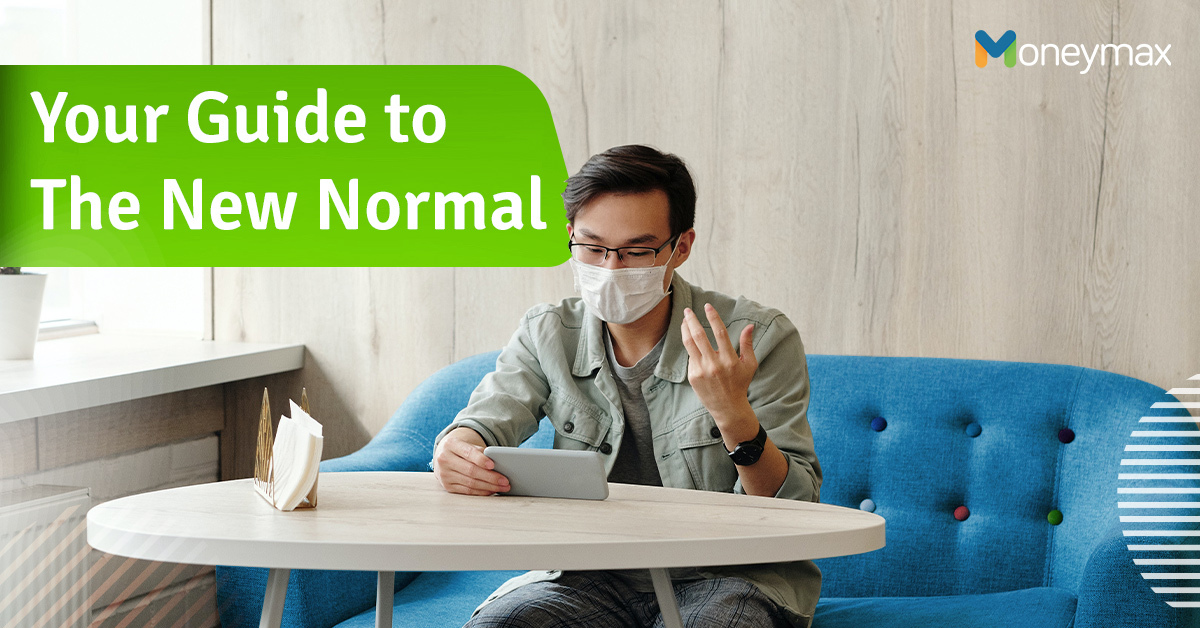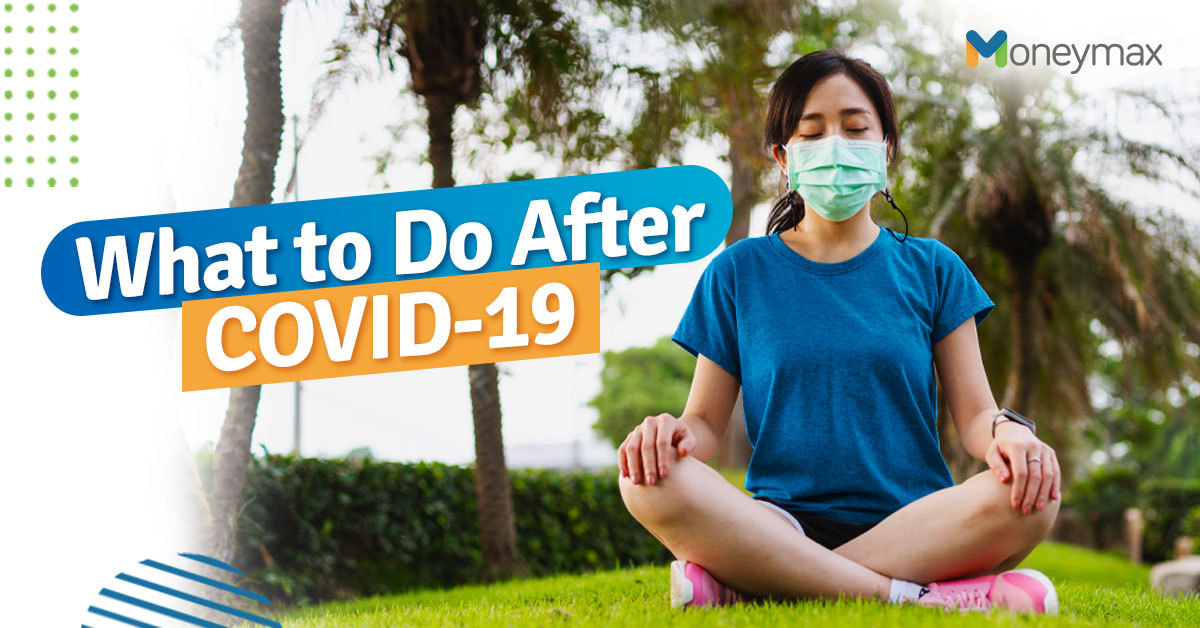How much does peace of mind cost nowadays? In the new normal, it will have you forking out thousands of pesos to find out whether you have COVID-19 or not.
There's a growing demand for COVID-19 testing in the Philippines. More and more Filipinos are taking the initiative—despite the steep swab test and rapid test price—just so they can sleep at night knowing they're safe. If they're found to be infected, at least they know they should self-isolate at home. Some patients undergo COVID-19 testing so they can return to work, while others need it so that they can go back to their families in the province.
Whatever's your reason for taking a test, the whole point of getting a COVID-19 test is to protect your loved ones and the people around you from the pandemic.
Let's take a look at two of the widely used COVID-19 testing methods in the Philippines—the rapid test and the swab test—and their prices, differences, and where you can get tested.
Rapid Test Price Range

The cost of rapid antibody tests in the Philippines ranges from PHP 1,500 to PHP 2,500. This COVID-19 testing method is cheaper than a swab test.
However, if you get a positive result from a rapid antibody test, you'll have to spend an additional amount on a swab test for confirmation.
Swab Test Price Range

Private hospitals in the Philippines charge between PHP 5,000 and PHP 8,150 for each swab test. Senior citizens and PWDs can avail of the mandatory 20% discount and VAT exemption.
Swab test prices are slightly lower elsewhere. For example, it will cost you PHP 4,600 to get a swab test at the Lung Center of the Philippines, which is a government hospital.
The Philippine General Hospital (PGH), also a public hospital, conducts one of the lowest-priced swab tests in the Philippines. They charge PHP 3,800 per test. However, this COVID-19 testing service is not open to the public yet. Only those within the UP System such as patients for admission, UP employees, and PGH staff can avail of swab testing at the PGH.
Is COVID-19 Testing Covered by PhilHealth?
PhilHealth covers the cost of COVID-19 testing worth PHP 901 to PHP 3,409, as long as it's a swab test conducted by any RITM-DOH certified laboratory[1]. This means PhilHealth members may reimburse their payment from the government agency if they submit the requirements before they get a swab test.
Some HMO and health insurance providers cover COVID-19 testing. As long as the facility accepts your HMO or insurance provider, you won't have to pay for your COVID-19 testing cost.
Back to the main article: If I Get COVID-19, How Much Do I Need to Pay?
Can I Get a Free COVID-19 Test?
Usually, local government units (LGUs) offer COVID-19 testing to their residents at no cost. LGUs are able to provide free rapid tests or swab tests because their test kits come from donations or they have allocated a portion of their budget for community-based testing.
Your city or municipal government may be conducting COVID-19 testing near you. Visit your LGU's website and social media pages to check for information on how you can get tested for free.
Swab Test vs Rapid Test: What is the Difference?
At a glance, here are the key differences between the rapid test and swab test:
| Swab Test | Rapid Test | |
|---|---|---|
| What the test detects | SARS-CoV-2 (the virus that causes COVID-19) | Antibodies that fight viruses |
| Samples taken | Mucus sample from the nose and throat | Blood sample |
| Accuracy | 97% or higher | Possibility of false positive and false negative results |
| Test result availability | After 24 to 48 hours or longer | As fast as 15 minutes |
| Price range | Expensive (PHP 3,800 to PHP 8,150) | Cheaper (PHP 1,500 to PHP 2,500) |
| COVID-19 case classification | Positive result: Confirmed COVID-19 case
Negative result: Not a COVID-19 case | Positive/Negative result: Probable case (needs to undergo confirmatory swab testing) |
What is a Swab Test and How Does It Work?

The real-time reverse transcription polymerase chain reaction (RT-PCR) test—better known as the swab test—is a method that uses swabs from the back of the throat and nose to detect the coronavirus.
Widely known as the gold standard for COVID-19 diagnosis, the RT-PCR test is recommended by the World Health Organization (WHO) for confirmation of cases, as it determines if the patient is currently infected or not.
The swabbing procedure, which takes only 5 to 10 minutes, involves inserting a thin and flexible six-inch cotton swab into the nostrils and another swab into the throat to collect enough samples that will be sent to the laboratory for analysis. It takes 24 hours to one week to release a swab test result.
Related:
- Does Health Insurance Cover COVID-19? What Filipinos Need to Know
- COVID-19 Business Recovery and Continuity Guide for Filipino Entrepreneurs
Meaning of a Swab Test Result

A patient's RT-PCR test may yield either a positive or a negative result.
A swab test result of "SARS-CoV-2 (causative agent of COVID-19) viral RNA DETECTED" means that the patient is very likely to have COVID-19.
However, a swab test result of "SARS-CoV-2 (causative agent of COVID-19) viral RNA NOT DETECTED" means that the coronavirus was not found in the patient's sample. Getting a negative result despite having flu-like symptoms during swabbing usually means that the illness was not caused by COVID-19.
Swab Test Accuracy
The RT-PCR test is considered the most accurate method for COVID-19 detection, with results having 97% accuracy or higher. It can even detect the coronavirus up to two days before symptoms start to appear. However, this COVID-19 testing method can't detect past infections.
What is a Rapid Test and How Does It Work?

The rapid antibody test is a blood test that detects immunoglobulins (better known as antibodies), which the body's immune system produces to fight a viral infection like COVID-19.
Compared to swab testing, the rapid antibody test involves a simpler process and yields results faster (after 15 minutes up to 24 hours). A rapid test kit uses a blood sample drawn from a patient through finger-pricking to detect the presence of antibodies, not the coronavirus.
Typically, antibodies start appearing within one to three weeks after infection, so rapid testing can't detect current infection. It can, however, detect past infections, which makes it useful for contact tracing.
Meaning of a Rapid Test Result
The rapid test identifies two types of antibodies: the immunoglobulin M (IgM) and the immunoglobulin G (IgG). IgM is the body's early immune response and indicates a recent infection. IgG is the delayed immune response and indicates a previous infection.
With these in mind, here's what each rapid test result could mean (for asymptomatic patients):
| IgM Result | IgG Result | Possible Rapid Test Result Meaning |
|---|---|---|
| Negative | Positive | IgG antibodies found. The patient probably had been infected before, had recovered (or is recovering), and is likely immune from the infection. |
| Positive | Positive | Both IgM and IgG antibodies found. The patient is likely to have been infected. |
| Positive | Negative | IgM antibodies found. The patient is likely to have an active infection. |
| Negative | Negative | No antibodies found. Not likely to be infected. |
It's still best to ask a healthcare professional for an interpretation of your rapid test result and recommendations for the next steps to take.
Rapid Test Accuracy
Several medical groups and institutions like the PGH advise against the use of rapid test kits because they're very likely to yield false positive or false negative results.
Also, rapid test accuracy depends on factors such as the kit's brand, manufacturer, and sensitivity (the rate at which the test can identify the antibodies).
According to the PGH[3], the sensitivity rate of rapid antibody tests is 20%, which is "too low to be of any value."
For its part, the DOH said that rapid tests can't be used as a standalone test to confirm or rule out COVID-19 infection. The Health Department advises the public to still get a confirmatory RT-PCR test if they tested positive using a rapid test kit.
Who is Required to Get a Swab Test?

For COVID-19 testing, the government prioritizes people who are at risk of being infected.
According to the Department of Health (DOH) guidelines on expanded COVID-19 testing[4], the following groups qualify for testing (listed from greatest to lowest priority):
- Patients or healthcare workers with severe/critical symptoms and relevant travel history or close contact
- Healthcare workers or patients with mild symptoms, with relevant travel history or close contact, and who are considered vulnerable (e.g., elderly and those with pre-existing medical conditions)
- Patients or healthcare workers with mild symptoms and relevant travel history or close contact
- Asymptomatic patients or healthcare workers but with relevant travel history or close contact
- Frontliners indirectly involved in the COVID-19 response efforts (e.g., COVID-19 swabbers, quarantine facility personnel, etc.)
- Other vulnerable patients (such as pregnant women) and those who will undergo high-risk surgery (such as dialysis/chemotherapy patients)
Also mandated to undergo swab testing are employees with coronavirus symptoms. The Joint Memorandum Circular No. 20-04[4] by the Department of Labor and Employment (DOLE) and Department of Trade and Industry (DTI) identifies certain industries where workers should get an RT-PCR test for free once every three months.
These include workers in food retail, financial services, transport and logistics, and construction, among others.
Filipinos returning from abroad, including repatriated OFWs, are also required to get swabbed when they arrive at the airport. Swab testing is free for OFWs.
Who Can Get a Rapid Test?
According to Cabinet Secretary and IATF Spokesperson Karlo Norgrales[5], the following people who have no symptoms and no travel history can be tested using a rapid test kit:
- Asymptomatic healthcare workers but with unprotected exposure who need clearance to return to work (if no swab test kit is available)
- Symptomatic close contacts of a known or suspected COVID-19 case (if no swab test kit is available)
- Asymptomatic close contacts of a COVID-19 patient
- Returning overseas Filipinos when they arrive at a quarantine facility and before they're discharged upon completing the mandatory 14-day quarantine
- Asymptomatic individuals living in areas with suspected community-based transmission
What are the Requirements for Rapid Test and Swab Test?
Here are the usual requirements when taking a rapid test or swab test:
- Booked appointment - Most COVID-19 testing centers in the Philippines require an appointment in advance (usually booked online or through phone call or email) to maintain physical distancing.
- Case Investigation Form (CIF)[6] - Fill out the CIF and bring three printed copies during your testing. The DOH requires this.
- COVID-19 testing request form accomplished by a doctor - The testing facility may or may not require this. Be sure to check first.
- Appropriate face mask - Wearing a face mask is a requirement but remember that not any mask will do. Some hospitals like Makati Medical Center and The Medical City ban the use of cloth masks and/or masks with valves, as advised by the Food and Drug Administration (FDA)[7]. Just to be sure, use a medical/surgical or N95 mask.
Related: Where to Buy Face Masks and Face Shields in the Philippines
Final Thoughts
How much you'll pay for the swab test or rapid test price depends on where you'll take it and how soon the result becomes available. The swab test is more expensive than the rapid antibody test because of the scarcity and high cost of equipment and other resources used to run the test. However, with a swab test, you are confident of a more accurate result.
To save money on COVID-19 testing, be alert to the LGU-sponsored testing in your area that you can get for free. Or use your PhilHealth, HMO, or health card coverage when getting a COVID-19 test in a hospital or clinic.
Lastly, be aware that the government prohibits buying a rapid test kit online or from a drugstore. You cannot self-administer a rapid test; thus, it's not a good way to cut on COVID-19 testing cost. Only trained professionals in DOH-licensed facilities can provide the tests.
Sources:
- [1] List of Licensed COVID-19 Testing Laboratories in the Philippines (DOH-Health Facilities and Services Regulatory Bureau)
- [2] PGH shares lessons learned during ongoing efforts to prevent COVID-19 transmission (University of the Philippines, 2020)
- [3] DOH Issues Guidelines on COVID-19 Testing (DOH press release)
- [4] DTI and DOLE Supplemental Guidelines on Workplace Prevention and Control of COVID-19 (Official Gazette)
- [5] LIST: Who can be tested using rapid COVID-19 test kits? (CNN Philippines, 2020)
- [6] COVID-19 Case Investigation Form
- [7] FDA Advisory on the Use of Face Mask with Valve










